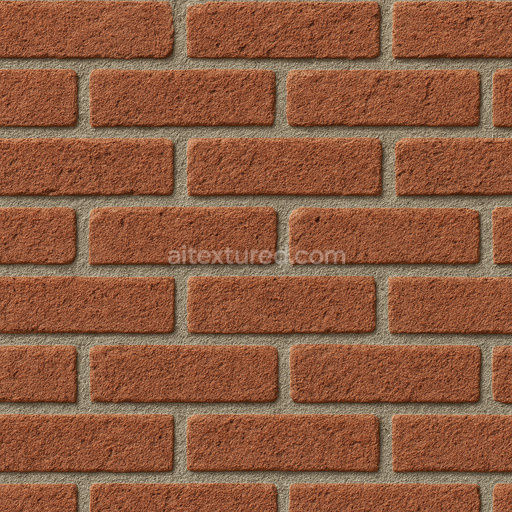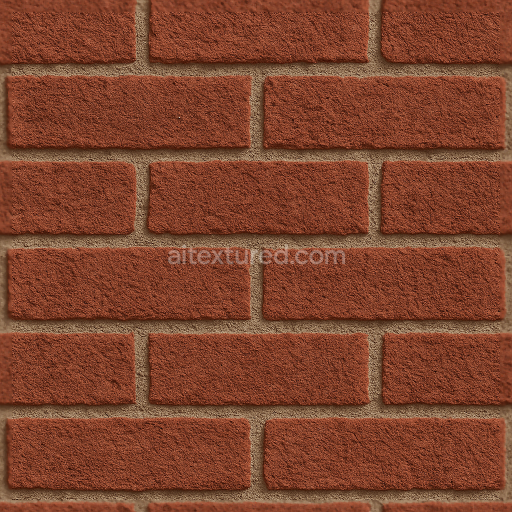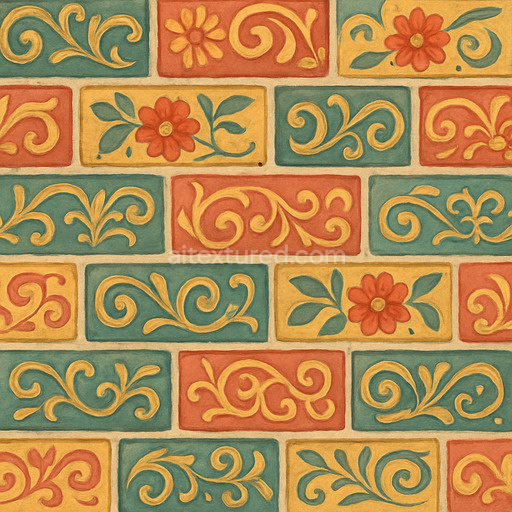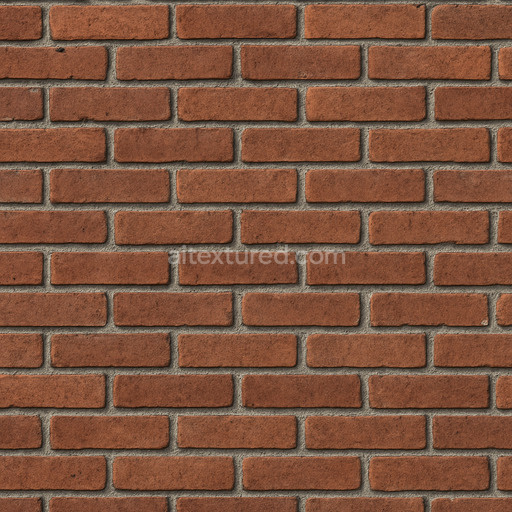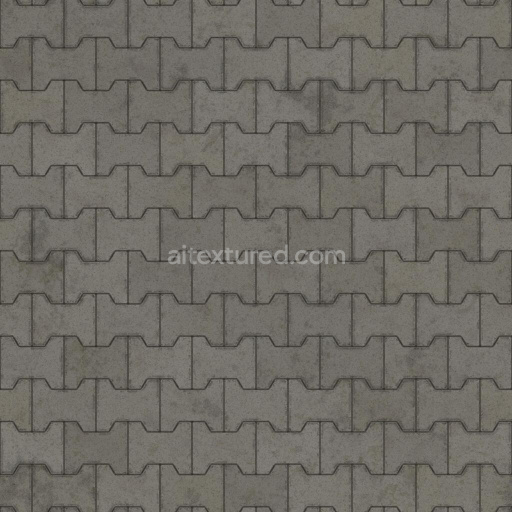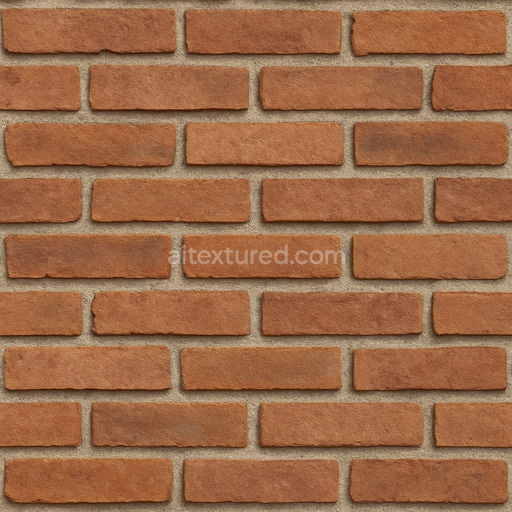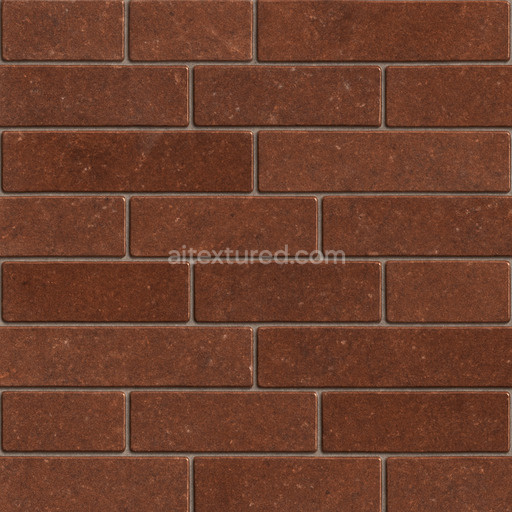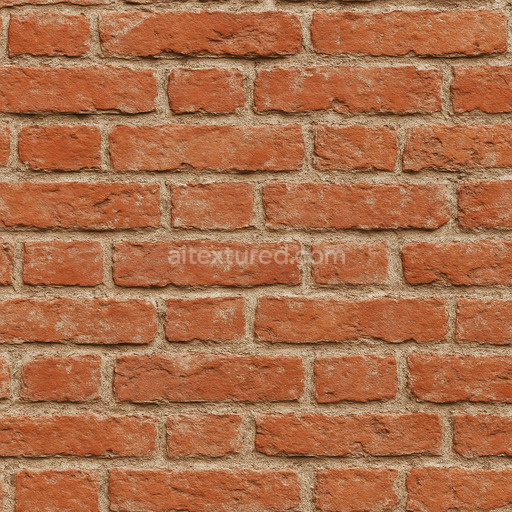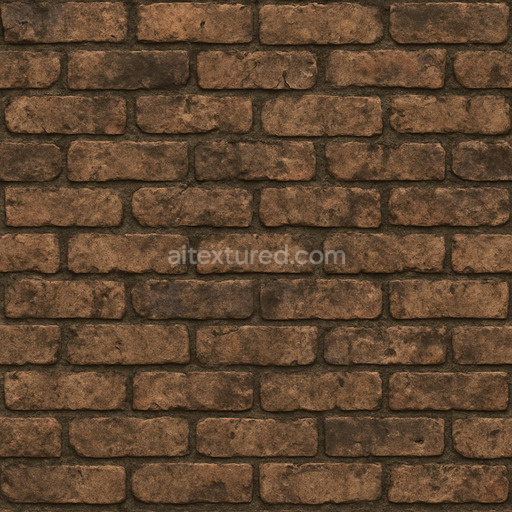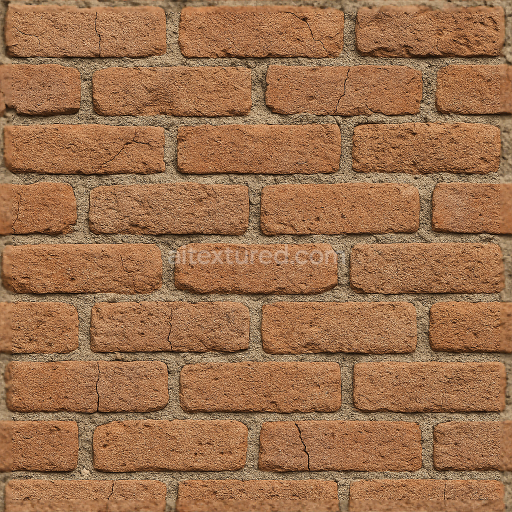The Seamless Black Brick Wall 17 texture by Share Textures is a meticulously crafted high-quality PBR 3D material that authentically replicates the distinct characteristics of fired clay bricks featuring a matte black finish. The base substrate is composed of dense ceramic brick units bonded firmly with a thin layer of cementitious mortar creating a robust and mineral-rich masonry composition. Within the texture fine granular details in the albedo channel reveal the natural aggregates and fine sand embedded during the original brick manufacturing process lending a subtle natural variation. The deep black coloration is achieved through carefully balanced pigments and subtle oxide layers producing a consistent yet organically varied tone across the surface. This texture’s slightly rough and weathered finish exhibits natural micro-porosity and minor imperfections typical of exterior brickwork exposed to moderate environmental wear enhancing realistic light diffusion and shadowing effects in physically based rendering workflows.
All essential PBR channels are included and optimized for seamless integration with modern rendering engines such as Blender Unreal Engine and Unity. The Base Color (Albedo) map provides true diffuse color without baked lighting ensuring accurate reactions to scene illumination. The Normal map encodes delicate surface micro-reliefs and mortar joint textures adding depth without additional geometry. Roughness defines the surface reflectivity simulating the brick’s matte slightly uneven texture while Ambient Occlusion introduces subtle shadowing within crevices boosting spatial detail. The Height (Displacement) map adds realistic dimensionality ideal for parallax occlusion or tessellation effects in supported renderers. The Metallic channel is consistently set to zero reflecting the non-metallic nature of fired clay bricks and ensuring physically accurate reflections. Thanks to the ultra-high 8K resolution this texture tiles flawlessly maintaining crisp detail on large surfaces without visible repetition or pixelation.
Designed for flexibility and broad compatibility this black brick wall texture integrates smoothly into diverse 3D workflows. In Blender it pairs perfectly with the Principled BSDF shader for physically accurate shading. Unreal Engine users can connect the Base Color Roughness Normal and Ambient Occlusion maps to their respective inputs to achieve consistent and realistic visuals. Unity’s URP and HDRP pipelines also support these maps within their Lit shaders to produce authentic results. For optimal appearance it is recommended to maintain consistent texel density relative to the scene scale and to employ triplanar or layered UV mapping techniques to reduce visible tiling artifacts. Combining Normal and Height maps further enhances surface detail through displacement or parallax effects while importing Base Color as sRGB and other maps as Non-Color ensures correct color management and shader interpretation.
Overall this Seamless Black Brick Wall 17 texture is a versatile and realistic masonry material ideal for architectural visualization game environments or VR applications. Its public domain license allows unrestricted use and modification for personal and commercial projects. The detailed material composition and precise channel optimization guarantee consistent physically accurate shading across all supported rendering engines streamlining workflows and elevating the visual quality of any 3D scene with ultra-high 8K resolution and exceptional realism.
How to Use These Seamless PBR Textures in Blender
This guide shows how to connect a full PBR texture set to Principled BSDF in Blender (Cycles or Eevee). Works with any of our seamless textures free download, including PBR PNG materials for Blender / Unreal / Unity.
What’s inside the download
*_albedo.png — Base Color (sRGB)*_normal.png — Normal map (Non-Color)*_roughness.png — Roughness (Non-Color)*_metallic.png — Metallic (Non-Color)*_ao.png — Ambient Occlusion (Non-Color)*_height.png — Height / Displacement (Non-Color)*_ORM.png — Packed map (R=AO, G=Roughness, B=Metallic, Non-Color)

Quick start (Node Wrangler, 30 seconds)
- Enable the addon: Edit → Preferences → Add-ons → Node Wrangler.
- Create a material and select the Principled BSDF node.
- Press Ctrl + Shift + T and select the maps
albedo, normal, roughness, metallic (skip height and ORM for now) → Open.
The addon wires Base Color, Normal (with a Normal Map node), Roughness, and Metallic automatically.
- Add AO and Height using the “Manual wiring” steps below (5 and 6).
Manual wiring (full control)
- Create a material (Material Properties → New) and open the Shader Editor.
- Add an Image Texture node for each map. Set Color Space:
- Albedo → sRGB
- AO, Roughness, Metallic, Normal, Height, ORM → Non-Color
- Connect to Principled BSDF:
albedo → Base Colorroughness → Roughnessmetallic → Metallic (for wood this often stays near 0)normal → Normal Map node (Type: Tangent Space) → Normal of Principled.
If details look “inverted”, enable Invert Y on the Normal Map node.
- Ambient Occlusion (AO):
- Add a MixRGB (or Mix Color) node in mode Multiply.
- Input A =
albedo, Input B = ao, Factor = 1.0.
- Output of Mix → Base Color of Principled (replaces the direct albedo connection).
- Height / Displacement:
Cycles — true displacement
- Material Properties → Settings → Displacement: Displacement and Bump.
- Add a Displacement node: connect
height → Height, set Midlevel = 0.5, Scale = 0.02–0.08 (tune to taste).
- Output of Displacement → Material Output → Displacement.
- Add geometry density (e.g., Subdivision Surface) so displacement has polygons to work with.
Eevee (or lightweight Cycles) — bump only
- Add a Bump node:
height → Height.
- Set Strength = 0.2–0.5, Distance = 0.05–0.1, and connect Normal output to Principled’s Normal.
Using the packed ORM texture (optional)
Instead of separate AO/Roughness/Metallic maps you can use the single *_ORM.png:
- Add one Image Texture (Non-Color) → Separate RGB (or Separate Color).
- R (red) → AO (use it in the Multiply node with albedo as above).
- G (green) → Roughness of Principled.
- B (blue) → Metallic of Principled.
UVs & seamless tiling
- These textures are seamless. If your mesh has no UVs, go to UV Editing → Smart UV Project.
- For scale/repeat, add Texture Coordinate (UV) → Mapping and plug it into all texture nodes.
Increase Mapping → Scale (e.g., 2/2/2) to tile more densely.
Recommended starter values
- Normal Map Strength: 0.5–1.0
- Bump Strength: ~0.3
- Displacement Scale (Cycles): ~0.03
Common pitfalls
- Wrong Color Space (normals/roughness/etc. must be Non-Color).
- “Inverted” details → enable Invert Y on the Normal Map node.
- Over-strong relief → lower Displacement Scale or Bump Strength.
Example: Download Wood Textures and instantly apply parquet or rustic planks inside Blender for architectural visualization.
To add the downloaded texture, go to Add — Texture — Image Texture.

Add a node and click the Open button.

Select the required texture on your hard drive and connect Color to Base Color.







